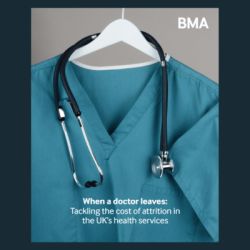A series of “mystery patient” drills, designed to evaluate communicable disease response capabilities in the emergency departments of 49 New York City hospitals, was carried out successfully, according to a new study published in the Centers for Disease Control and Prevention's (CDC) Morbidity and Mortality Weekly Report.
Researchers from the New York City Department of Health and Mental Hygiene and the CDC conducted 95 drills from December 2015 to May 2016. Drill scenarios presented a patient reporting signs or symptoms and travel history consistent with possible measles or Middle East Respiratory Syndrome (MERS).
The patients were masked and isolated in 78% of drills, although 39% of the 49 hospitals in the study failed at least one of the drills by keeping the patients waiting for longer than 30 minutes without triage.
Two hospital employees, acting as “trusted agents,” were informed of the drills, leaving the clinical ER staff in the dark. At least 80% of patients were asked about recent fevers, 50% were asked about skin lesions and more than two-thirds were asked about respiratory symptoms.
The vast majority (88%) of patients were given a mask, with 1.5 minutes as the median time between the patient’s entry into the ER and when they were given the masks. The study found a median time of 8.5 minutes from entry into the ER into isolation, which is comparable with previous drills using Ebola symptoms.
In the study, patients with a travel history were far more likely to be masked and isolated, though there was some confusion among the ER staff as to which locations were risky. The researchers recommend clinicians routinely ask patients about travel.
“The finding that masking and isolation occurred significantly more frequently in situations where a travel history had been elicited suggests that routinely inquiring about recent travel could prevent exposures to infectious patients at critical entry points to the healthcare system,” researchers said.
The drills provided an opportunity to examine real-world implementation of infectious disease-related screening and isolation of potentially high-risk patients in EDs across New York City, the research team noted. The exercises also provided a reasonable baseline for expectations of ED staff member practices regarding control of highly infectious diseases at this entry point to the hospital system.
The researchers also examined the ED teams’ infection control measures and found that just 36% of staff members performed personal hand hygiene. Only 16% told patients to do so.
Source: FierceHealthcare
Image Credit: KOMUnews
Latest Articles
Mystery drills, communicable disease response, ER care
A series of “mystery patient” drills, designed to evaluate communicable disease response capabilities in the emergency departments of 49 New York City hospitals, was carried out successfully, according to a new study published in the Centers for Disease C























